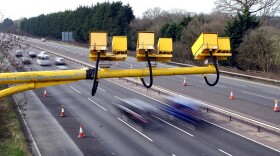A majority of Cleveland-area crash fatalities occur on a limited number of roads around the city, according to a Monday report to the City Council Health and Human Services Committee.
A report released Monday found just 7 percent of Cleveland streets are responsible for nearly 35 percent of fatalities and serious injuries in car crashes, and a little more than 1 percent of streets account for nearly 15 percent. The report was an update on the city’s Vision Zero initiative, which aims to reduce the number of pedestrian deaths.
Roads with the most fatalities include portions of Superior, Kinsman, Detroit, St. Clair and Broadway avenues and West 26th and East 55 th streets. Many of the areas highlighted overlap with low-income neighborhoods, said Director of City Planning Freddy Collier.
“If you have poor road conditions, you probably don’t have identifiable crosswalks and you don’t have those fundamentals that equal a safety scenario in the neighborhood,” Collier said.
Identifying those trends will provide ways to address them and eliminate some of the equity gaps, Collier said.
“Hopefully you can start to see, you can start to identify correlations between disadvantaged communities and where those high incidents of fatalities or injuries are,” Collier said. “You can start to really hone in on that and start to blur those lines a bit.”
The project is currently seeking a consultant to develop an action plan, which would outline specific ways to improve safety, include installations of measures such as additional lanes, pedestrian islands, and similar small tools to eliminate risk on the roads. The city hopes to have a consultant in place by October.
“Of the things that were just discussed, it sounds like much of them are in progress or should be done already through traffic engineering,” said Cleveland City Council President Kevin Kelley. “So can we look at a realistic timeline of what can get done on a short-term, what can get done by 2021?”
Other city council members expressed concern about a lack of opportunity for residents to voice what they would like to see in specific neighborhoods.
“To the degree that we can show residents how this all works, how slowing down traffic even just a little bit makes residents, children, people walking safer, I think that would be really important,” said Councilman Charles Slife, who represents Ward 17. “Because when you start talking about getting rid of lanes and putting in bike lanes, it can get controversial really fast.”
The action plan will include residential input, said Research and Policy Analyst Anne Tillie.
“We began starting to engage the community and let them know about Vision Zero and what we hope to do,” Tillie said. “But as we move forward we hope to be able to dig deeper into our neighborhoods.”
Any changes will likely be in favor of pedestrian ease of movement, said City Bicycle and Pedestrian Coordinator Calley Mersmann.
“What we’re focusing on here is people’s right to move around the city safely,” Mersmann said. “That may mean sacrificing some speed and convenience for road users.”
The Vision Zero team also is collaborating with the Greater Cleveland Regional Transit Authority to see how public transportation plays into risks on the road, Mersmann said.
The city has seen nearly a dozen fatalities due to traffic crashes in the last two months. At least some of that is due to increased speeding, Mersmann said. The Vision Zero action plan will include methods for mitigating speeding, she said, which is a primary concern for pedestrian safety.
“People are moving around less, inner streets are emptier, but anecdotally and based on data, we know people are driving faster,” she said.



![[Gubin Yury / Shutterstock]](https://npr.brightspotcdn.com/dims4/default/75cca03/2147483647/strip/true/crop/980x551+0+0/resize/880x495!/quality/90/?url=http%3A%2F%2Fnpr-brightspot.s3.amazonaws.com%2Flegacy%2Fuploads%2F2020%2F8%2F31%2Fshutterstock_602379395.jpg)
